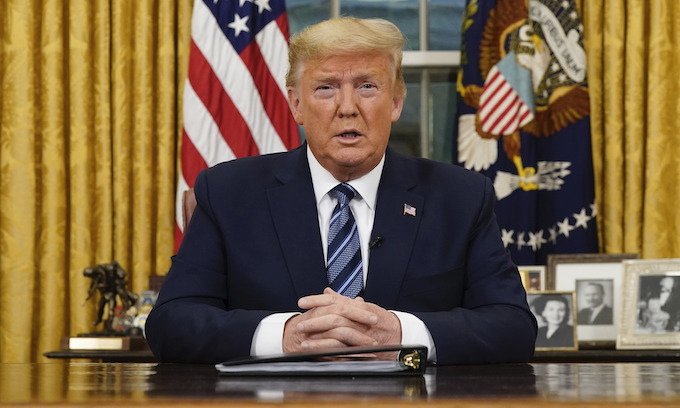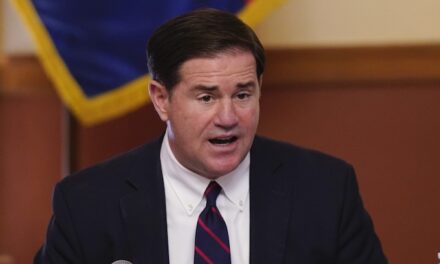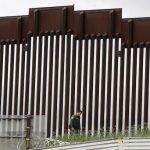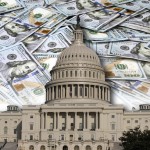President Trump late Wednesday said he will ban travel from Europe for 30 days as the World Health Organization declared a pandemic and U.S. health officials forecast a surge in cases, citing hot spots on both coasts and cases hitching a ride across the Atlantic after months of relative calm.
Mr. Trump vociferously defended his approach to the virus overall, citing his decision on Jan. 31 to restrict travel from China. But Europe didn’t take similar measures, he said, resulting in cases pouring into the U.S. from Italy and other hard-hit countries.
“The European Union failed to take the same precautions and restrict travel from China and other hot spots. As a result a large number of new clusters in the United States were seeded by travelers from Europe,” the president said in a televised address from the Oval Office.
The European ban, which will not apply to Britain, will go in effect Friday at midnight. And while there will be some exceptions for properly screened Americans, the decision marks a dramatic and unprecedented escalation in the fight against the disease known as COVID-19.
Mr. Trump announced the measures as U.S. cases of the coronavirus topped 1,000 and the death toll reached three dozen as of late Wednesday. In other dramatic actions, the NCAA announced its college basketball tournaments would be played without spectators and the NBA suspended its season just minutes after Mr. Trump’s address, because one of its players had tested positive for the virus.
“We will significantly reduce the threat to our citizens, and we will ultimately and expeditiously defeat this virus,” Mr. Trump said.
The president also said he will ask Congress to provide financial relief for workers who are ill, quarantined or taking care of others, as Wall Street reels and Main Street sees an economic ripple effect from the crisis. He will direct the Small Business Administration to extend loans to affected firms in places affected by the virus, and he wants to see a cut to the payroll tax, though Democrats are cool to the idea.
The White House also said Wednesday that Mr. Trump will scrap upcoming trips to Colorado and Nevada after 2020 Democratic rivals canceled large events on the campaign trail.
The U.S. reported its first case of coronavirus in mid-January. It hasn’t seen an unsustainable pile-up of patients, however, even as other countries get slammed, leaving thorny questions about its trajectory in the states.
“A lot of us have been kind of curious about that ourselves,” said William Schaffner, an infectious disease specialist at Vanderbilt University. “One possible answer is that perhaps it’s been circulating but not quite as prominently as we feared. It might still be quite focal with local spread, but not yet widely distributed across the United States. We don’t have that answer because we haven’t been testing.”
Four months into the global outbreak, the U.S. has recorded roughly 35 deaths out of about 1,300 cases, or half the caseload of Spain, according to a Johns Hopkins University tracker.
Aside from a slice of Washington state north of Seattle — where the virus swept through a nursing home — there hasn’t been a rush on hospitals as in Italy, with 12,000 cases and more than 800 deaths.
Even in New York, where Gov. Andrew Cuomo ordered the National Guard to contain part of a town with more than 100 cases, a little over a dozen people have been hospitalized.
“It may be that our population has fewer smokers, and less pollution than they did in Wuhan, or that actually we are being affected by the milder end of the spectrum of illnesses that it may produce,” Dr. Schaffner said.
Also, China enforced strict lockdown measures in mid-January, which likely prevented the virus from leaking into the U.S. in great intensity early on.
Mr. Trump then barred foreign nationals who had traveled in China or Iran over the past 14 days from entering the country. He also required passengers from South Korea or Italy to be screened for health problems before or after flying to the U.S.
Without those restrictions, “I believe we would be in a worse position,” Dr. Anthony Fauci, director of the National Institute of Allergy and Infectious Diseases, told the House Oversight and Reform Committee on Wednesday.
The Department of Homeland Security said the Europe travel ban will apply to foreign nationals who have traveled within the past 14 days in over two dozen countries known as the Schengen Area, including France, Germany and Spain.
The ban does not generally apply to legal residents or the immediate family members of U.S. citizens.
“While these new travel restrictions will be disruptive to some travelers, this decisive action is needed to protect the American public from further exposure to the potentially deadly coronavirus,” DHS Secretary Chad Wolf said.
Mr. Wolf said he plans to require Americans who have been to the affected countries to travel into select airports and undergo health screening.
The ban applies to human travelers and not goods, even though the president appeared to stumble over his words by saying “these prohibitions will not only apply to the tremendous amount of trade and cargo, but various other things.”
Related Stories:
- EU condemns Trump travel ban from Europe as virus spreads
- Democrats unveil coronavirus spending bill focusing on free testing, paid emergency leave
- World Health Organization declares COVID-19 outbreak a pandemic
- ‘Tough measures’: Text of Trump’s address on coronavirus
- As stocks nose-dive, White House, Democrats craft rescue plans
Capitol Hill’s top Democrats said Mr. Trump appeared to be taking the virus seriously — belatedly in their view — but they faulted his focus abroad, saying there were domestic issues afoot.
“We have a public health crisis in this country and the best way to help keep the American people safe and ensure their economic security is for the president to focus on fighting the spread of the coronavirus itself. Alarmingly, the president did not say how the administration will address the lack of coronavirus testing kits throughout the United States,” House Speaker Nancy Pelosi and Senate Minority Leader Charles E. Schumer said in a joint statement.
Now, U.S. officials are hoping to avoid the fear and confusion that is consuming Italy, where authorities have severely restricted public movement, commerce and interactions.
Some of those cases are already causing problems in the U.S.
“That’s where the cases are coming in for us. In a way, if you just want to be blunt, Europe is the new China,” Robert Redfield, the director of the Centers for Disease Control and Prevention, told House lawmakers.
Most troubling, the virus is now hopping from person to person in hot spots in Washington state, New York and California, prompting the White House to propose 30 days of stringent countermeasures as expanded testing gives a fuller picture of where else the virus may be lurking.
“When you get community spread, it makes the challenge much greater. So I can say we will see more cases and things will get worse than they are right now,” Dr. Fauci said.
Mr. Trump addressed the nation on the same day the WHO did what many saw as inevitable — it labeled COVID-19 a global pandemic, citing its “alarming levels of spread” and “alarming levels of inaction” as the virus grabs a foothold on every continent except Antarctica.
It told nations to keep up the fight.
“We cannot say this loudly enough, or clearly enough, or often enough: all countries can still change the course of this pandemic,” said WHO Director-General Tedros Ghebreyesus.
WHO said it last used the pandemic label in 2009, when it declared one around a new strain of H1N1 influenza.
Wednesday’s pandemic label is more of a descriptive term than one with a practical effect. It denotes “the worldwide spread of a new disease” that affects a large number of people.
“This does not mean it’s more severe today than it was yesterday. It’s a warning: every country needs to prepare for coronavirus,” said Tom Frieden, the former director of the CDC and CEO of Resolve to Save Lives, a global public health initiative.
The coronavirus has spread to 114 countries and killed more than 4,600 people since its discovery in Wuhan, China, in December.
Wuhan and the surrounding Hubei province saw tens of thousands of cases, prompting draconian measures from Beijing to lock down the region to bring transmission under control. The brunt of the epidemic has shifted to places such as South Korea and also Iran, which like Italy has restricted college classes and public events to try to disrupt the virus’s spread.
Mr. Trump said in Wednesday’s speech that he may reconsider the travel restrictions on China and South Korea, as their situation improves.
Dr. Fauci said the trajectory of the U.S. outbreak will depend on two things: America’s ability to keep infected travelers out and its ability to tamp down the spread within its communities.
“If we don’t do very serious mitigation now, what’s going to happen is that we’re going to be weeks behind and the horse is going to be out of the barn,” he said. “Even in areas of the country where there are no or few cases, we’ve got to change our behavior. We have to essentially assume that we are gonna get hit.”
Mounting fears prompted the NCAA to take the extraordinary step of barring fans from attending March Madness basketball games, limiting attendance to staff and family.
The White House called on Seattle and three counties in Washington state and Santa Clara County, California, to turn church services into video streams and cancel group events at senior homes. It said schools should perform health checks, hospitals should triage patients outside to avoid exposure, and professional and college sporting events should be scrapped or held behind closed doors.
The administration said it worked closely with Democratic Govs. Jay Inslee of Washington and Gavin Newsom of California in developing the strategies. The recommendations apply to Seattle and King, Pierce and Snohomish counties and Santa Clara County, California.
© Copyright (c) 2020 News World Communications, Inc.
—-
This content is published through a licensing agreement with Acquire Media using its NewsEdge technology.



















Recent Comments